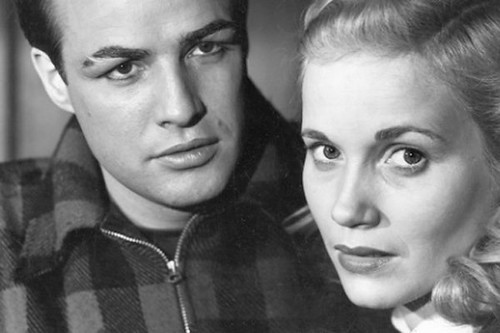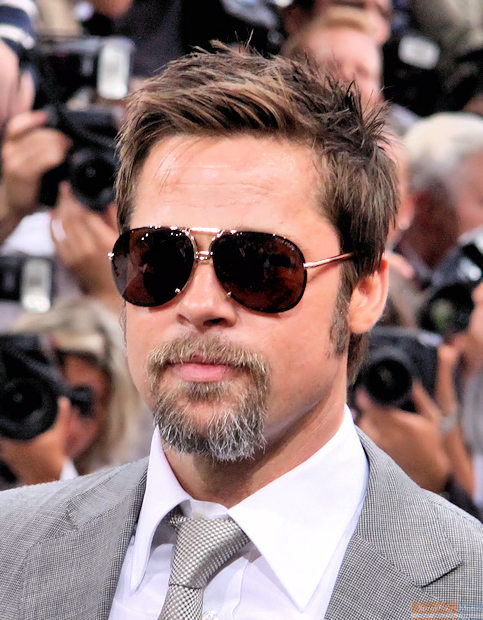
Brad Pitt, a name synonymous with cinematic excellence and global stardom, has long captivated audiences with his dynamic performances on screen. Yet, beyond the glare of Hollywood lights and blockbuster successes, Pitt has cultivated an equally compelling persona as a serious patron and practitioner of contemporary art. His journey through the art world is not merely a celebrity dalliance; it reflects a profound and evolving engagement, characterized by a discerning collector’s eye for significant works and a deep, personal commitment to creative expression. This nuanced involvement positions him as a noteworthy figure within the broader art ecosystem, commanding respect not just for his acquisitions but increasingly, for his own artistic contributions.
The actor’s passion for art extends far beyond mere aesthetic appreciation, delving into the intricate layers of market dynamics, artistic narratives, and philosophical inquiry that define the contemporary landscape. His collection, estimated at a remarkable $25 million, speaks volumes about his sophisticated taste, featuring works by titans of modern art such as Mark Rothko, Damien Hirst, and Pablo Picasso, alongside thought-provoking pieces by contemporary giants like Jeff Koons and Banksy. Pitt’s selections are not accidental; they are a testament to a collector who understands the gravitas of artistic movements and the enduring value of innovation. He gravitates towards pieces that challenge perceptions, provoke dialogue, and exemplify pivotal moments in art history.
This article embarks on an in-depth exploration of Brad Pitt’s art world footprint, beginning with a close examination of some of the most prominent and impactful acquisitions that define his esteemed collection. We will delve into the market significance and artistic merit of these works, offering a privileged glimpse into the private world of a collector whose choices consistently resonate with the pulse of global art trends. From multi-million dollar paintings to avant-garde sculptures and deeply personal photographic selections, Pitt’s collection reveals a connoisseur dedicated to building a legacy that transcends the transient nature of celebrity, firmly establishing him as a formidable presence in the realm of fine art. Indeed, Pitt himself has stated that he buys what he likes, not overly concerned with a piece’s appreciation in value, an approachable attitude that makes his collection particularly interesting and authentic.
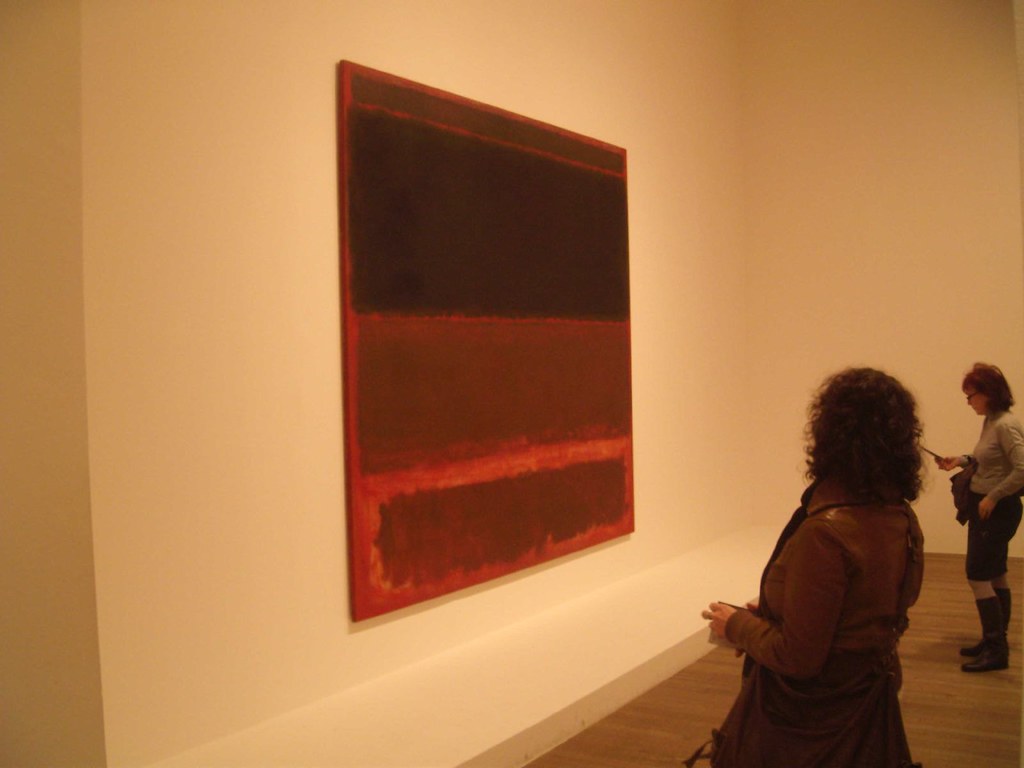
1. **Mark Rothko’s “No. 6 (Blue, Green, and Orange)”**Among the crown jewels of Brad Pitt’s impressive art collection is a seminal work by the Abstract Expressionist master, Mark Rothko. The piece, titled “No. 6 (Blue, Green, and Orange),” exemplifies Rothko’s signature style of luminous, floating color fields that invite profound contemplation. This particular painting garnered significant attention when it was sold at auction for an astounding $72.8 million in 2014, a figure that underscores its immense market value and the enduring demand for works by one of the 20th century’s most influential artists. Its acquisition by Pitt further solidifies his reputation as a collector with an eye for historically important and financially robust investments.
Rothko’s art is renowned for its ability to evoke deep emotional and spiritual responses, transcending mere visual representation to touch upon the sublime. “No. 6 (Blue, Green, and Orange)” is no exception, with its carefully balanced hues and soft, feathered edges creating an immersive experience for the viewer. The work, characterized by its vibrant yet meditative qualities, reflects Rothko’s unique contribution to abstraction, where color itself becomes the subject, conveying universal human experiences without explicit narrative. Pitt’s appreciation for such a piece highlights his sophisticated understanding of art that operates on a transcendental level, seeking more than just aesthetic pleasure.
The presence of a Rothko within Pitt’s collection speaks volumes about his commitment to acquiring works that hold substantial cultural and art-historical weight. These large-scale color field paintings are not merely decorative; they are statements on the nature of perception, emotion, and the human condition. Owning a piece like “No. 6” places Pitt in an elite echelon of collectors who are not only investing in monetary value but are also preserving critical moments in the development of modern art. It suggests a collector who values the intellectual rigor and emotional depth inherent in a masterpiece of this caliber, aligning his personal taste with established artistic excellence.
This acquisition also signals Pitt’s awareness of the art market’s top-tier, demonstrating his willingness to compete for works that define a generation. The enduring appeal of Rothko’s work, particularly his color fields from the mid-20th century, continues to drive high prices and fierce competition among institutions and private collectors alike. By integrating such a monumental piece into his private collection, Brad Pitt not only enriches his personal environment but also contributes to the ongoing narrative surrounding significant artistic legacies, showcasing a profound understanding of what makes art truly enduring.
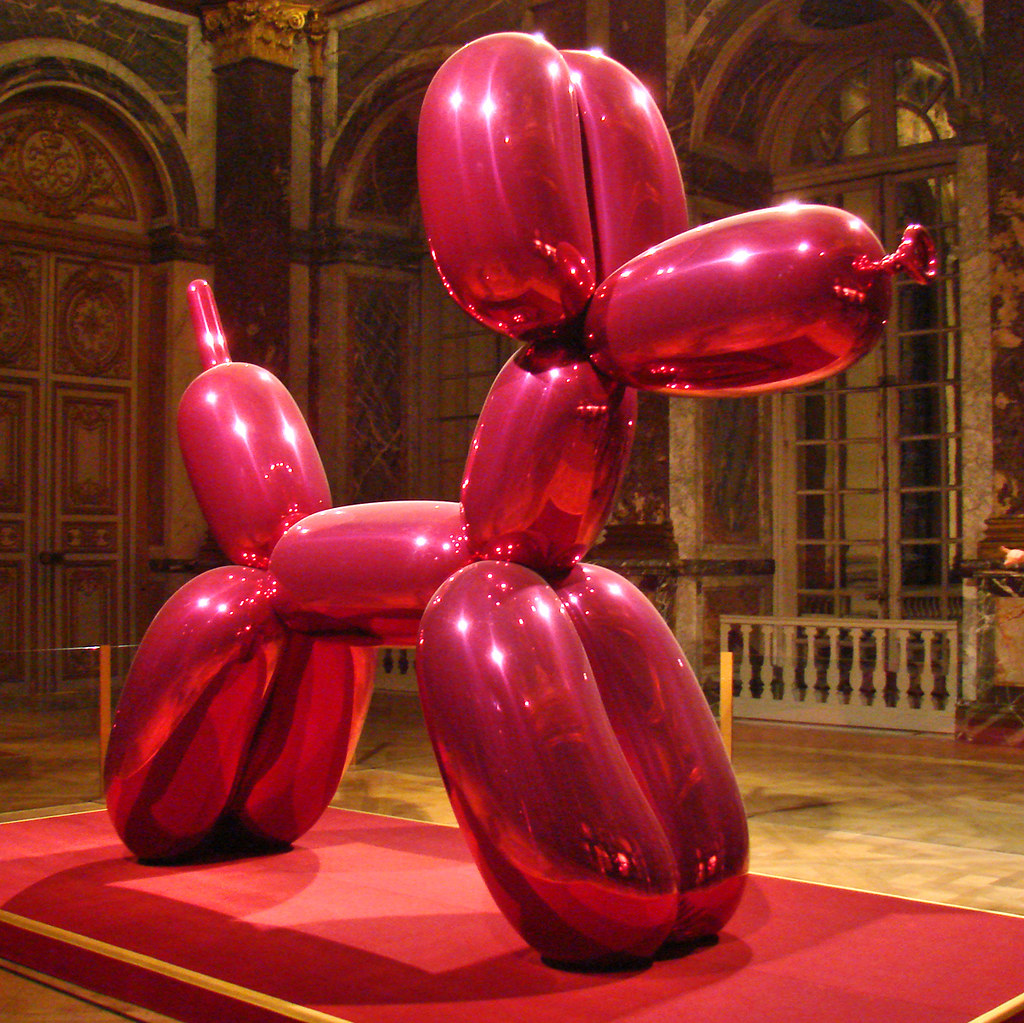
2. **Jeff Koons’ “Balloon Dog (Orange)”**Another striking testament to Brad Pitt’s discerning taste in contemporary art is his ownership of Jeff Koons’ “Balloon Dog (Orange),” a piece that epitomizes Koons’ iconic style and his profound influence on the pop art movement. This monumental sculpture, a highly polished, mirror-surfaced rendition of a twisted balloon animal, is a prime example of Koons’ ability to elevate everyday objects into high art, challenging traditional notions of beauty and value. Its sale for an astonishing $58.4 million at auction in 2013 not only set a record as the most expensive work by a living artist sold at that time but also solidified its status as a cultural phenomenon and a significant market benchmark.
Koons’ “Balloon Dog” series is renowned for its pristine, reflective surfaces, which invite viewers to interact with the artwork by seeing their own reflections distorted and integrated into the sculpture itself. According to Koons, these inflatable animals are a “representation of breath and human life,” exuding optimism and creating a compelling juxtaposition between the mundane and the monumental. This philosophy aligns perfectly with the sophisticated engagement that Pitt demonstrates in his collecting, seeking works that offer layered interpretations and engage with profound themes beneath a seemingly playful exterior. The piece’s shiny, flawless finish also speaks to themes of perfection, consumerism, and childhood innocence, making it a rich subject for critical analysis.
The acquisition of such a piece by Pitt highlights his interest in works that are both critically acclaimed and culturally resonant. Jeff Koons, known for his controversial yet highly influential oeuvre, often explores themes of popular culture, celebrity, and commodity. By investing in a “Balloon Dog,” Pitt aligns himself with a segment of the art market that values bold statements and works that push the boundaries of artistic convention. It signifies an appreciation for art that sparks conversation, even debate, and stands as a powerful symbol of contemporary artistic ambition and market prowess.
Moreover, the reflective surfaces of Koons’ balloons contribute significantly to their meaning, reflecting not just the viewer but also the environment, creating an ever-changing spectacle. This dynamic quality adds another dimension to Pitt’s collection, introducing a piece that is not static but actively engages with its surroundings and its audience. The “Balloon Dog (Orange)” serves as a vibrant, captivating centerpiece, embodying a sense of celebratory grandeur while subtly questioning the constructs of high and low art. Its inclusion underscores Pitt’s commitment to building a collection that is both intellectually stimulating and visually spectacular, reflecting the diverse currents of contemporary artistic thought.

3. **Banksy Commissioned Work**Brad Pitt’s art collection notably extends into the realm of street art, featuring a highly exclusive commissioned piece by the enigmatic and globally celebrated artist, Banksy. This acquisition places Pitt among a select few fortunate enough to secure a direct commission from an artist who typically operates outside traditional commercial channels and whose public works often appear anonymously. The unique piece reportedly features Pitt alongside Angelina Jolie, set in an outdoor scene next to their former home at Festival House on La Fourche Beach near New Orleans. This private commission underscores Banksy’s rare foray into bespoke art for a private collector, elevating its significance beyond measure.
Banksy’s work is characterized by its subversive social and political commentary, often delivered with wit, irony, and a profound understanding of visual communication. His public art frequently addresses themes of anti-consumerism, anti-war sentiment, and political injustice, making him one of the most provocative voices in contemporary art. A commissioned work, especially one that incorporates personal elements of the collector, offers a fascinating juxtaposition to his usual public interventions. It suggests a unique artistic dialogue between the artist and Pitt, highlighting an profund appreciation for Banksy’s incisive commentary and his ability to fuse powerful messages with accessible imagery.
The narrative surrounding this specific Banksy piece is particularly intriguing given its personal context for Pitt and Jolie, reflecting a moment in their shared life. While much of Banksy’s work is universal in its critique, this bespoke creation offers a rare glimpse into a more intimate side of the artist’s practice, crafted specifically for a prominent couple. It speaks to Pitt’s appreciation for art that is not only critically relevant but also holds personal resonance, serving as a powerful, if unconventional, memento. Owning a Banksy of this nature is not merely an investment in a highly sought-after artist but also an acquisition of a unique piece of cultural history, blending celebrity persona with artistic rebellion.
The fact that Pitt managed to convince Banksy to create a commissioned work speaks volumes about his influence and the artist’s willingness to engage with an A-list personality on his own terms. This rare piece not only exemplifies Pitt’s diverse collecting interests but also underscores the fluidity between mainstream celebrity culture and the often-elusive world of street art. It is a powerful reminder that significant art can emerge from unexpected places and that true connoisseurship transcends conventional categories, recognizing genius wherever it appears, whether on a gallery wall or a city street.
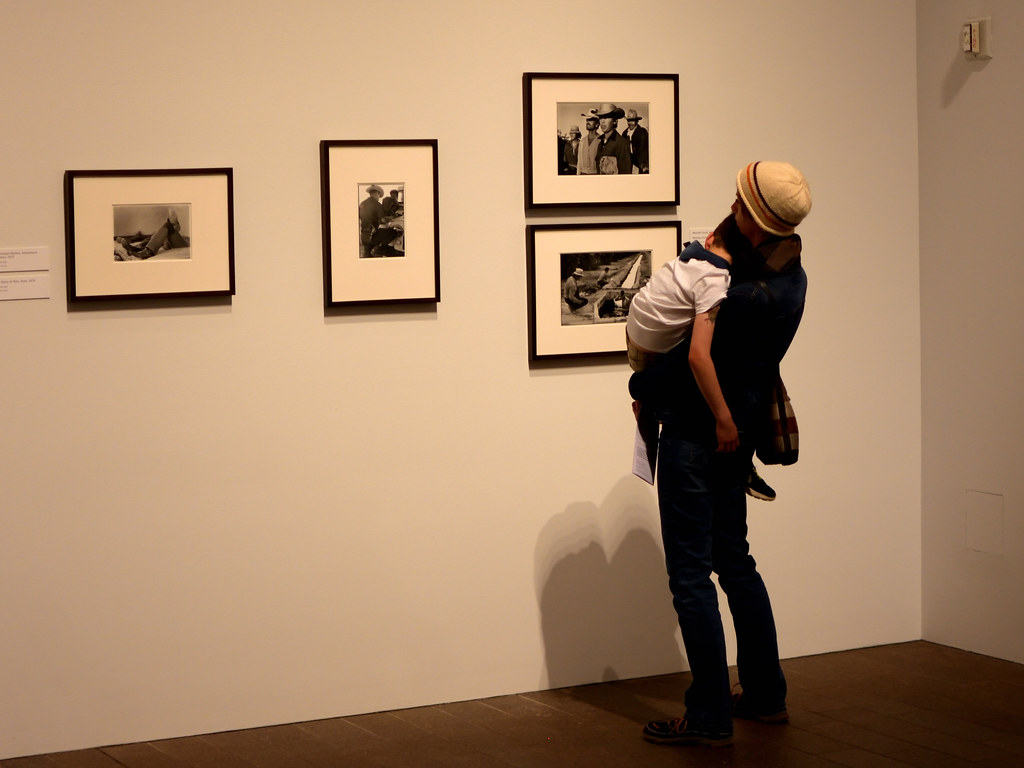
4. **Danny Lyon’s “The Police, Clarksdale, Mississippi 1962″**Brad Pitt’s collection showcases a profound appreciation for photographic art, notably including Danny Lyon’s poignant work, “The Police, Clarksdale, Mississippi 1962.” Lyon, an esteemed American photographer, is celebrated for his compelling documentation of the Civil Rights Movement, capturing raw and unflinching moments that illuminate pivotal periods in American history. This particular photograph, acquired by Pitt at Paris Photo, LA for $6,000, offers a powerful visual commentary on racial tensions and the socio-political climate of the early 1960s in the American South. Its inclusion in Pitt’s collection underscores his commitment to art that possesses deep historical and social significance, reflecting a collector who values narratives that confront and inform.
The image itself, depicting a police officer giving a two-finger salute in Clarksdale, Mississippi, at the height of racial unrest, is laden with symbolism and historical weight. Lyon’s work often focused on capturing the human element within broader social movements, making his photographs not just records of events but profound statements on dignity, injustice, and the struggle for change. This specific piece encapsulates a moment of palpable tension, providing viewers with an unvarnished look at a challenging era. Pitt’s acquisition demonstrates an understanding of photography’s power as a historical document and an artistic medium capable of stirring conscience and memory.
Lyon is most known for his portrait of Martin Luther King Jr. and his ability to chronicle the Civil Rights Movement with unparalleled authenticity. “The Police, Clarksdale, Mississippi 1962” contributes to this legacy, offering a nuanced perspective on the systemic issues prevalent at the time. The context provided in the source article further ties this work to themes of leadership and resilience, referencing a mayor who served during racial tension and later helped New Orleans after Hurricane Katrina. While the direct connection between the police officer in the photo and the mayor is not explicitly stated as a causal link to Lyon’s shot, the inclusion of this background information by the original context piece itself reinforces the photo’s powerful engagement with American history and leadership during crisis.
Brad Pitt’s selection of this photograph reveals a collector who looks beyond purely aesthetic appeal, seeking works that provoke thought, initiate dialogue, and hold a mirror up to society. It demonstrates a dedication to preserving and engaging with challenging historical narratives through art. The inclusion of Lyon’s “The Police, Clarksdale, Mississippi 1962” within his personal collection not only enriches his understanding of American history but also allows him to live with a piece that constantly reminds him of the enduring importance of social justice and civil rights, showcasing a conscious and responsible approach to collecting.
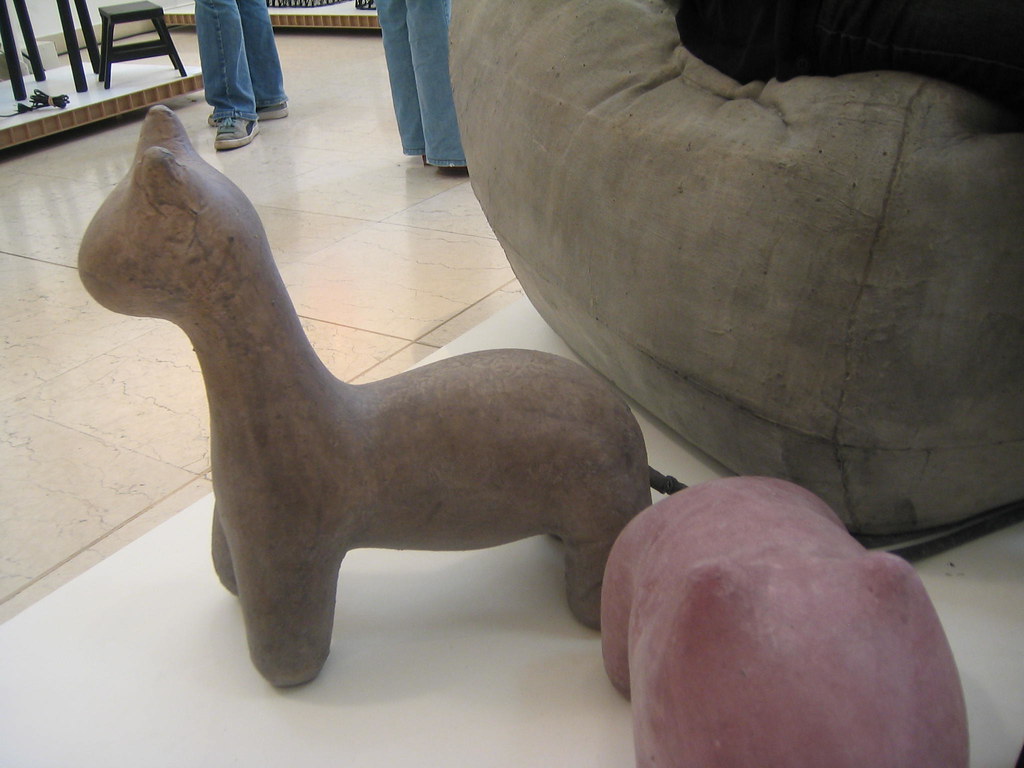
5. **Nacho Carbonell’s Playful Objects**Brad Pitt’s discerning eye for high-end design is prominently featured in his collection through the acquisition of three works by Nacho Carbonell, an artist who was, at the time, fresh off finishing school in the Netherlands. Carbonell, now running an independent studio, is celebrated for his unique approach to design, crafting “playful objects” that employ “recycled materials like glass bottles or mash among other things.” These creations often manifest as “organic shapes with earth tones,” reflecting a distinctive aesthetic that blurs the lines between art and functional design. Pitt’s early recognition of Carbonell’s talent underscores his forward-thinking approach to collecting and his support for emerging, innovative designers.
Carbonell’s work is characterized by its tactile qualities and a profound engagement with natural forms and sustainable materials. His pieces are not merely furniture or decorative items; they are sculptural entities that invite interaction and contemplation, infused with a sense of whimsy and natural integrity. The “playful objects” that Pitt acquired speak to a collector who appreciates ingenuity and craftsmanship that defies conventional categorization. This choice reflects an understanding that cutting-edge design, particularly from artists who are pushing material boundaries, holds significant artistic merit and investment potential. It showcases Pitt’s interest in the evolution of design as an art form and his willingness to embrace fresh perspectives.
The actor’s presence at events like Design Miami, where he reportedly picked up these pieces, highlights his active participation in the design world’s cutting edge. This engagement suggests a desire to be at the forefront of aesthetic trends, supporting artists who are shaping the future of industrial and conceptual design. The “organic shapes with earth tones” described in Carbonell’s work resonate with a natural, grounded aesthetic, which likely appeals to Pitt’s broader design sensibilities, as reflected in his efforts to create “a comfortable and inviting space” influenced by his art collection.
By acquiring multiple pieces from an artist early in their career, Pitt not only makes a significant investment but also provides crucial validation and support. This patronage helps to elevate the artist’s profile and contributes to the broader recognition of design as a serious category within the art market. Nacho Carbonell’s inclusion in Pitt’s collection signals a collector who is not afraid to venture beyond established names, actively seeking out and championing new voices that contribute meaningfully to the discourse of contemporary art and design. This thoughtful approach to collecting extends Pitt’s influence beyond the traditional art gallery, into the dynamic intersection of art and functional aesthetics.
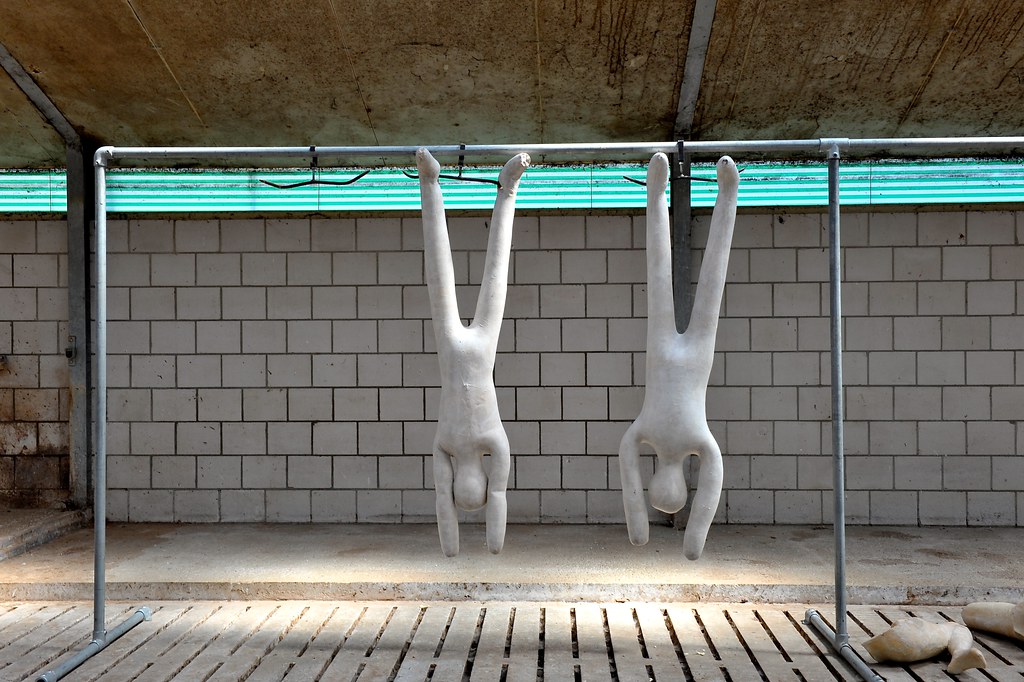
6. **Atelier van Lieshout’s Mini Capsule Hotel**Further demonstrating Brad Pitt’s adventurous and sophisticated taste in collecting, his acquisition of three pieces from the avant-garde Atelier van Lieshout studio, including a “Mini Capsule Hotel,” marks a significant engagement with art that challenges conventional structures and functionalities. Atelier van Lieshout, known for “dismantling the idea that an individual artistic genius creates great art,” operates as a collective, producing works that often explore themes of self-sufficiency, utopian communities, and the boundaries of societal norms. Pitt’s acquisition of these pieces on one visit to Design Miami Basel in 2009, particularly the Mini Capsule Hotel, which can double as six beds and cost $134k, illustrates his fascination with innovative and thought-provoking design that extends beyond mere aesthetics into practical yet conceptual realms.
The “Mini Capsule Hotel” itself is a prime example of Atelier van Lieshout’s radical approach, blending functional design with sculptural art. Priced at a substantial $134,000, this piece transcends traditional art objects, offering both a conceptual statement and a tangible, usable structure. Its ability to function as “six beds” speaks to the studio’s interest in modularity and addressing practical human needs within an artistic framework. Pitt’s plan for its installation “at his private beach in Santa Barbara where called ‘The Beach House'” further underscores his intention to integrate art into his living spaces in a highly interactive and unconventional manner, demonstrating a collector who lives with his art rather than simply displaying it.
This choice of acquisition reflects Pitt’s interest in art that is provocative and challenges established artistic paradigms. Atelier van Lieshout’s collective ethos stands in stark contrast to the singular genius often celebrated in the art world, making their work particularly appealing to collectors who appreciate intellectual rigor and social commentary embedded in artistic practice. The “Mini Capsule Hotel” is not just a sculpture; it’s a commentary on contemporary living, space, and community, encapsulating complex ideas within its unique design. This thoughtful selection indicates Pitt’s preference for art that engages with pressing social and architectural questions, pushing the boundaries of what art can be.
Pitt’s investment in such a substantial and conceptual piece further solidifies his standing as a serious and adventurous collector. It signals a deep appreciation for art that blurs the lines between sculpture, architecture, and social experiment. The integration of such a bold piece into his personal environment underscores a commitment to living surrounded by art that inspires critical thought and offers unique experiential qualities. By embracing the challenging and innovative work of Atelier van Lieshout, Brad Pitt demonstrates an exemplary dedication to the forward march of contemporary art and design, proving his collection is far from superficial.
### Section 2: Beyond the Screen: Brad Pitt’s Poignant Debut as a Sculptor, Exploring Themes of Self-Reflection and Fragility Through Innovative Forms
Brad Pitt’s journey into the visual art world has culminated in a deeply personal and poignant debut as a sculptor, marking a significant evolution from his established role as a discerning collector. This foray into creative practice transcends mere celebrity dabbling, revealing an artist driven by introspection and a profound need for self-expression. His works, first publicly exhibited at the Sara Hildén Art Museum in Tampere, Finland, as part of the ‘We’ group show, alongside mentor Thomas Houseago and musician Nick Cave, have surprisingly garnered critical acclaim, proving the depth of his commitment.
This artistic turn, particularly focused on sculpture and ceramics, began in earnest following his divorce from Angelina Jolie in 2017. Pitt candidly described his motivations, stating it was ‘born out of ownership over what I call a ‘radical inventory of the self.’ And getting really brutally honest with me and taking account of those I may have hurt and the moments I’ve just gotten wrong.” This deeply personal ethos imbues his sculptures with a raw vulnerability and an undeniable authenticity, resonating with an audience far beyond the art world’s usual confines and offering a powerful testament to art as a form of healing and self-discovery.
His artistic process is hands-on and experimental, as he shared with GQ in 2017: ‘I’m making everything. I’m working with clay, plaster, rebar, wood. Just trying to learn the materials.’ This dedication to mastering diverse mediums and finding a ‘voice there’ underscores his serious engagement, illustrating a journey of artistic exploration that prioritizes vernacular expression over grand pronouncements. It’s a remarkable transition for a global star, demonstrating a genuine desire to communicate through tangible forms, delving into themes that are both universally relatable and uniquely his own.
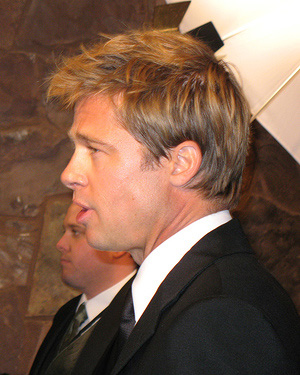
7. **Brad Pitt’s Artistic Debut: A Radical Inventory of the Self**Pitt’s formal artistic debut at the Sara Hildén Art Museum was a revelation, showcasing nine sculptures that offered a powerful glimpse into his inner world. The exhibition, titled ‘We,’ curated a dialogue between Pitt, his friend and mentor, British artist Thomas Houseago, and Australian musician Nick Cave. This collaborative environment underscored Houseago’s belief that ‘I am not an I. I’m a WE!’, fostering a space for shared artistic exploration and mutual support among the three artists.
This exhibition was not just a display of talent but a deeply personal narrative, as Pitt himself expressed, ‘For me, it’s about self-reflection… It’s about knowing where I went wrong in my relationships, where I went wrong…’ Such candidness provides profound context for his creations, positioning them as tangible manifestations of emotional processing and accountability. The artworks become a visual diary of his introspective journey, allowing viewers to connect with the universal experience of seeking understanding and growth through personal challenges.
The critical reception for Pitt’s work was overwhelmingly positive, surprising many. British art critic Jonathan Jones, for instance, remarked, “Shockingly, Brad Pitt turns out to be a very fine sculptor,” adding that he has “sidestepped the embarrassment of celebrity art to reveal what by any standard are powerful, worthwhile works.” This praise validates Pitt’s genuine artistic endeavor, distinguishing his work from superficial celebrity projects and firmly establishing him as a serious, compelling voice in contemporary sculpture. His commitment to learning and experimenting with materials like clay, plaster, rebar, and wood, as he previously stated, evidently bore fruit.
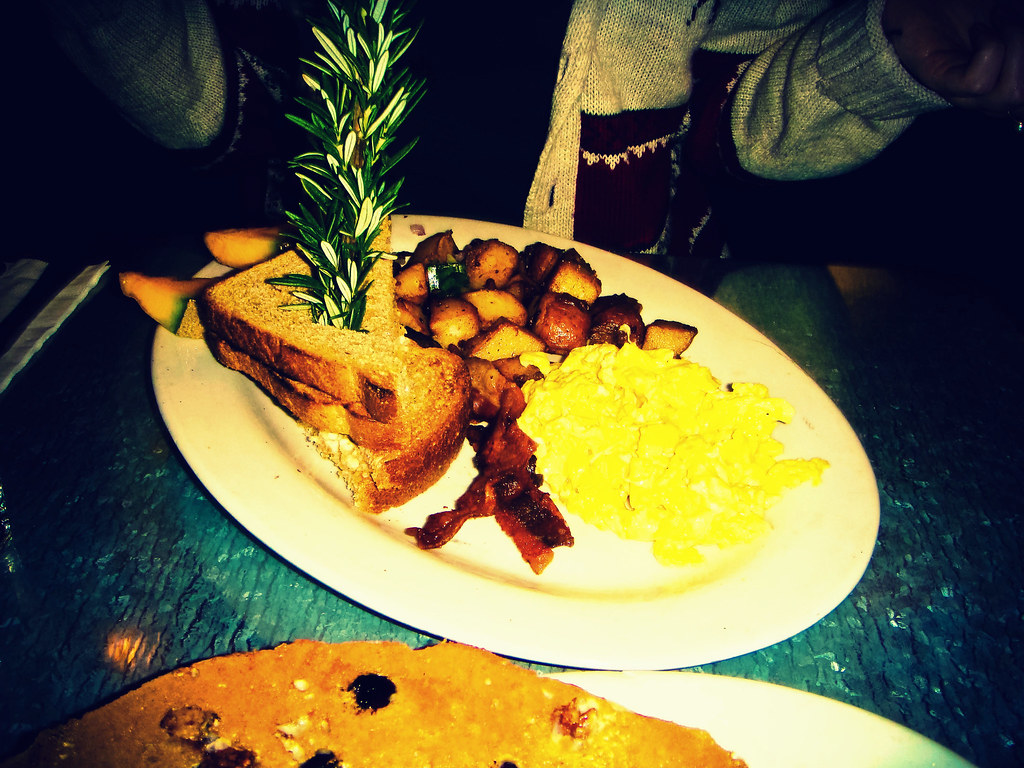
8. **’House A Go Go’: The Genesis of a Sculptural Journey**Among the compelling pieces showcased at his debut was ‘House A Go Go,’ a sculpture that holds particular significance as Pitt’s first completed work, dating back to 2017. This 18-inch miniature house, crafted from tree bark and crudely held together with tape, is a profound symbol of new beginnings and the raw, unrefined nature of an artist’s nascent steps. Its unassuming materials belie a deep thematic resonance, echoing the fragility and rebuilding inherent in his personal reflections.
The choice of a house as his inaugural sculptural subject is particularly telling, especially given the timing post-divorce. It directly engages with themes of structure and the profound fragility of home, both physical and emotional. The use of natural elements like tree bark, combined with the temporary binding of tape, suggests a construction that is both organic and vulnerable, mirroring the process of piecing together a life after disruption. It’s a powerful exploration of domesticity, loss, and the resilience required to reconstruct one’s foundations.
‘House A Go Go’ thus serves as a foundational piece in Pitt’s sculptural oeuvre, embodying the very essence of his artistic motivation. It is not a grand statement but an intimate, introspective exploration of personal experience, translated into a relatable form. The modest scale and humble materials amplify its emotional weight, inviting viewers to consider their own understandings of stability, rupture, and the ongoing human endeavor to create and secure a sense of belonging, even when life feels taped together.

9. **’Aiming At You I Saw Me But It Was Too Late This Time’: A Mirror of Conflict**Among Pitt’s most impactful sculptures is the large plaster wall-hanging titled ‘Aiming At You I Saw Me But It Was Too Late This Time,’ created in 2020. This arresting bas-relief depicts a gun fight between eight figures, a dynamic and violent tableau that immediately grabs attention. Its scale and composition evoke a sense of ancient friezes, reinterpreted through a contemporary lens to explore themes of conflict, consequence, and self-recognition within a dramatic narrative.
Pitt himself offered a profound interpretation of this powerful work: ‘To me it’s about self-reflection. It’s about where I have gotten it wrong in my relationships, where have I misstepped, where am I complicit.’ This candid explanation transforms a scene of outward aggression into an internal psychological landscape, where the figures engaged in conflict become projections of the artist’s own struggle with personal accountability. The title itself suggests a moment of painful realization, where the act of pointing blame outwards ultimately reveals one’s own reflection.
The plaster medium, often associated with classical sculpture, lends a timeless quality to the modern drama, allowing the emotional intensity of the piece to transcend specific events. The multiple figures in active combat create a chaotic yet meticulously composed scene, symbolizing the internal turmoil of confronting one’s past actions and their repercussions. This sculpture stands as a powerful testament to Pitt’s bravery in using art as a vehicle for raw, unflinching honesty, inviting viewers to engage in their own radical inventories of the self.

10. **The Coffin-Sized Bronze Box: Fragmented Realities**Another deeply evocative piece in Pitt’s debut exhibition is a large, coffin-sized bronze box. This monumental sculpture is characterized by its unsettling imagery of hands, feet, and faces attempting to break through the structure at various angles. The choice of bronze, a material traditionally associated with permanence and heroic statuary, is here subverted to depict a struggle for liberation or expression from within a confined space, adding a layer of profound symbolic weight to the work.
This piece speaks powerfully to themes of inward pain, reflection, and fragmented realities. The trapped limbs and faces suggest a desperate attempt to escape or communicate from a state of containment, perhaps mirroring feelings of being overwhelmed or constrained during difficult personal periods. The very size of the box, reminiscent of a coffin, evokes notions of mortality, closure, and the struggle against being buried or silenced, making it a stark commentary on emotional confinement.
The texture and patina of the bronze further enhance the sculpture’s gravitas, lending it an ancient yet deeply contemporary feel. The frantic gestures of the fragmented figures, pushing and straining against the unyielding metal, create a palpable sense of tension and yearning. This work serves as a powerful artistic expression of overcoming adversity, conveying the intense, often unseen, battles fought within. It illustrates Pitt’s courage in exposing such vulnerabilities, transforming personal anguish into a universally understood narrative of struggle and resilience.
Brad Pitt’s journey from a celebrated actor to a respected sculptor is a compelling narrative of artistic authenticity and personal transformation. His collection, a vibrant tapestry of modern and contemporary masterpieces, reflects a keen eye and a sophisticated understanding of the art market. Yet, it is his intensely personal sculptural work — raw, introspective, and profoundly honest — that truly defines his evolving legacy in the art world. From bullet-ridden homes to figures grappling within bronze confines, Pitt has found a powerful new medium to explore the depths of human experience, proving that true artistry often emerges from the most vulnerable corners of the self. As he continues to navigate this new chapter, his contributions promise to intrigue and inspire, cementing his place as a multifaceted cultural icon, truly beyond the screen.




